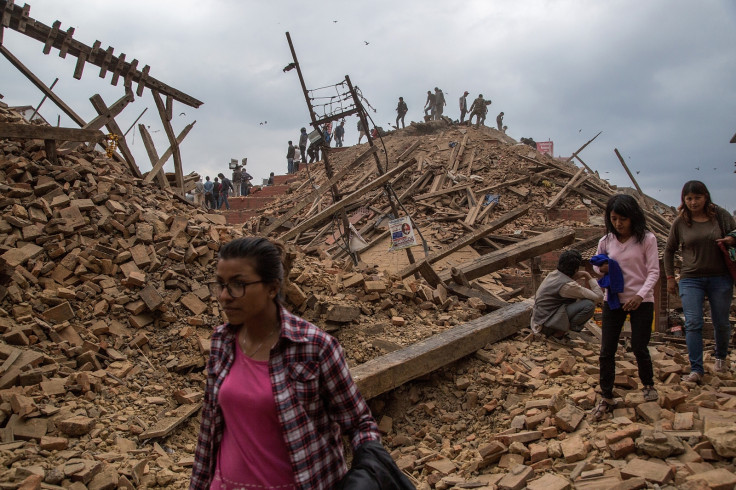Nepal Earthquake: Powerful aftershock of 6.7 magnitude triggers more avalanches on Mount Everest

A powerful aftershock of 6.7 magnitude struck the Nepalese capital Kathmandu on Sunday, 26 April afternoon a day after the massive earthquake.
The aftershock was strong enough to rattle buildings as frightened inhabitants stormed out on the streets. The effects were felt in various Indian cities as well.
The aftershock, which was registered at a depth of 10kms according to the USGS, is feared to trigger more avalanches on Mount Everest.
Nepal has been rocked by no less than 30 aftershocks overnight after a massive earthquake of 7.9 magnitude shook the country.
One of the overnight aftershocks was measured at 6.8 on the Richter scale, which itself is deadly in its own right, while some tremors were of about 4.2 magnitude. Some aftershocks lasted for as long as two minutes.
Aftershocks have hampered the ongoing rescue operations as the extent of the devastation is gradually emerging.
Moreover, the death toll is inching towards 2,000 and reports suggest that around 6.6 million people have been affected by the quake.
Hundreds, if not thousands, who are trapped or buried under the rubble are being rescued by emergency personnel as the Himalayan nation, which has a population of about 27 million, declared a state of emergency.
Tens of thousands of people spent the night outdoors in freezing temperature topped by occasional rain, and remain in fear of further aftershocks.
The epicentre of the massive quake was close to the congested Nepalese capital Kathmandu –where a majority of deaths have taken place – has a population of about one million inhabitants.
"If you look at the spread of the earthquake a lot of the rural areas have been hit as well. The information we received from the field is that 80% of the houses in these rural areas have been destroyed," Lex Kassenberg, Nepal country director for CARE International told the CNN.
Only a week ago, about 50 seismological experts and social scientists were in Nepal predicting a major disaster like this over the tectonic movements in the region. Nonetheless, the experts did not expect the quake to occur immediately.
"It was sort of a nightmare waiting to happen. Physically and geologically what happened is exactly what we thought would happen," seismologist James Jackson, head of the earth sciences department at the University of Cambridge in England, told the Associated Press.
"I was walking through that very area where that earthquake was and I thought at the very time that the area was heading for trouble."
Experts have been warning of a major earthquake in the Himalayan belt for the past two years. An active Indian tectonic plate is said to be pushing up against a Tibetan tectonic plate at about 4cm a year, they say. However, it remains to be seen whether the latest quake is the major disaster they feared or is there something much worse to come.
© Copyright IBTimes 2025. All rights reserved.




















